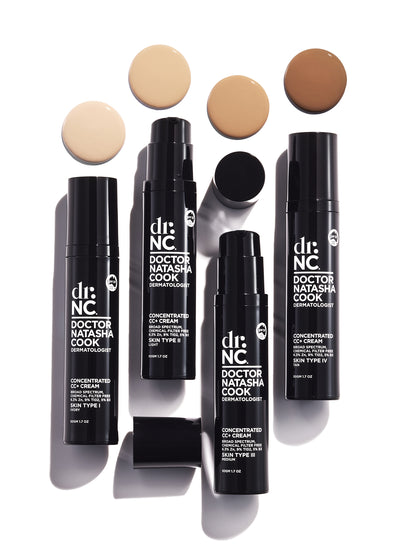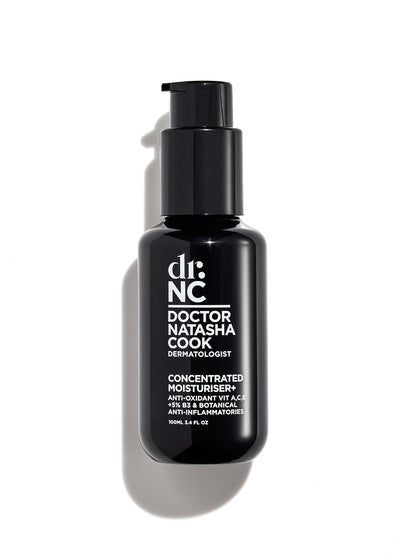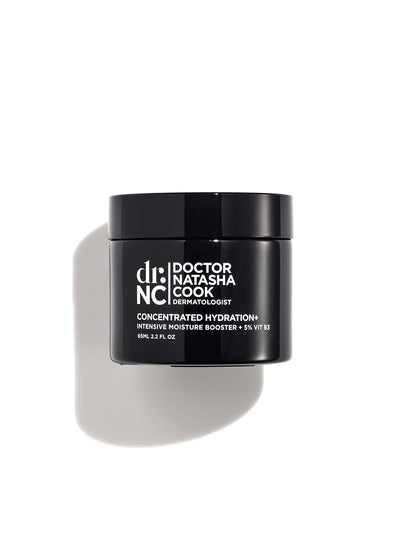
A dermatologist shares the secret to hydrated, balanced skin - all year around.
First things first - the role of a quality moisturiser cannot be underestimated when it comes to maintaining hydrated, balanced and radiant skin all year round. However as the seasons change achieving consistency with your skin can become a nightmare.
In a previous post, I went into detail about how flare-ups of rosacea, sensitivity and dehydration can spike during winter (read here). Now I want to focus on what you need to look for when you pick a moisturiser. Believe it or not, the product you choose may be more dependant on your environment than your supposed “skin-type”.
(Subscribe now) and receive every post
Myth number one: But I select my moisturiser because I have naturally oily/combination/dry skin?
The skin-type myth is the reason why we feel like our skin is more troubled in one half of the year over the other (stressful I know). The reality is that there is no such thing as “skin-type” because our skin changes in relation to our environment.
Now I’m not going to go into detail about the hows and whys because it’s a topic I covered extensively (here), however there is a simple way to explain it. During the middle of summer in Sydney through a combination of being in cooler air-conditioned environments; high humidity and heat outdoors - I can find that my skin can feel anything from balanced/oily to more congested than usual, and potentially prone to the odd breakout.
Now, as a part of my job I travel internationally, so 48 hours later I may be smack-bang in the middle of European winter. Now if the dry air conditioned airplane isn’t a harsh enough environment in itself - just the change of hot and humid to freezing and dry can transform my skin from oily to dehydrated and sensitive in a flash.
This gives us insight into how your ‘skin-type’ (for lack of a better descriptor) changes due to environment, and change of seasons.
Question: Is this why you have two moisturisers in your range of concentrated clinical strength skincare?
In short yes. Anyone familiar with the brand knows that I have developed two moisturisers - the Concentrated Moisturiser and the Concentrated Hydration+.
The difference between the two is the intensity of the hydration boost that you receive. A general rule of thumb is to use a more lightweight product in high humidity and heat, and something richer and more nourishing in the cold. I tend to use both of them all year round, however substitute more of one for the other depending on how my skin is reacting to my environment.
Concentrated Moisturiser:
When it’s warm and muggy you need a lightweight moisturiser that immediately integrates with your skin that won’t sweat out. It is formulated with soothing and anti-inflammatory vitamins A,C,E and glycerin for lightweight hydration that won’t mess with your makeup. I recommend using this everyday as a part of your morning routine - and in the cooler months you can double up with the richer Hydration+.
Concentrated Hydration+:
When the weather is cooler - this is your go to. A luxurious dual night/eye cream with powerful water binding ingredients (humectants). It combines 5% vitamin B3, medical grade lanolin; shea butter and glycerin and integrates seamlessly with your skin restoring long lasting hydration without oiliness (12hrs+).
This is the moisturiser I use before I board an international flight, and is the last thing I put on my skin every night before my head hits the pillow.
Remember these aren’t hard and fast rules - it’s more about approaching your skin as something that evolves and changes depending on your lifestyle, surroundings and environment. The take-out - never get set in the way of thinking ‘my skin is like this’, listen to what it tells you.
Question: So what ingredients do I need in a moisturiser?
Vitamins:
Look for a vitamin boosted moisturiser to ensure your skin is getting what it needs both inside and out. Some of my absolute favourites include vitamin B3 (goes beyond just sebum control - read here), vitamin C, E and in small quantities vitamin A.
B3 does just about everything for your skin - it keeps the energy centre of your cells (mitochondria) functioning like a young cell; Inhibits pigment production; increases one of your skin's best moisturising agents called ceramides and acts as a stable antioxidant and anti inflammatory.
I also love vitamin C for its benefits of preserving collagen and evening out skin tone as well as vitamin A for its cell renewing properties.
Humectants:
Humectants are the water binding ingredients that ensure your skin remains hydrated by reinforcing and repairing your skin’s barrier. Natural humectants such as shea butter and medical grade lanolin are a fantastic place to start - and others such as glycerin ensure the products feel fantastic.
So what’s the take-out?
No matter what your opinion is on skin-type, take the time to understand how different environments affect your skin, and then develop a routine that works with you and the environment. Don’t be stuck on the idea that your skin is a “type” all year round.
This belief doesn’t just apply to moisturisers but can be used for choosing the right serums, cleansers and even specialised treatments. If your skin is particularly tricky, or you have a concern that is a little more complex (or you are simply NOT getting the results you and your skin deserve) its important to see a specialist. Find out more about the range here.
(Subscribe now) and receive every post










